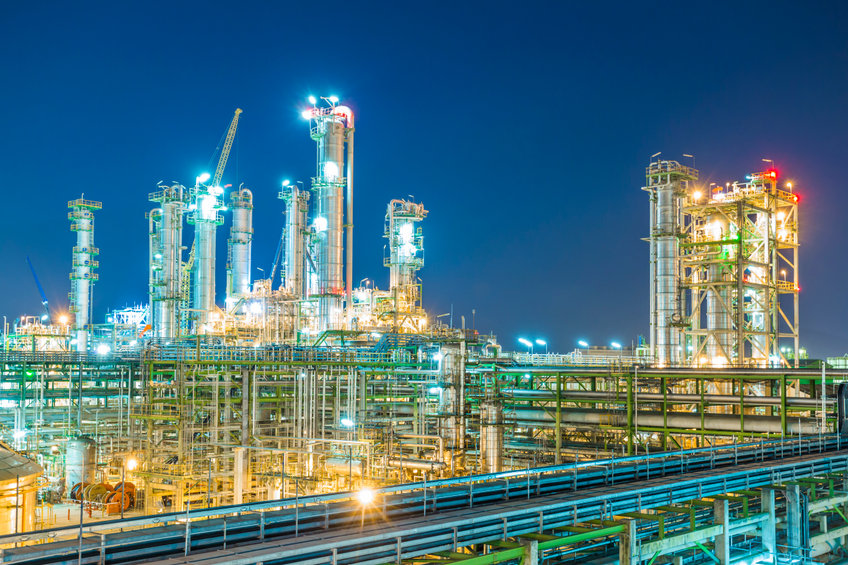Control combustion parameters in burning fuel gas used in blanketing of VOCs in crude storage tanks, for efficiency gains.

Oil companies worldwide face increasingly stringent regulatory requirements to minimise discharge to atmosphere of VOC’s from (crude) oil storage tanks.
An efficient way of meeting these requirements is blanketing the tank head space with fuel gas. A key advantage of using fuel gas as blanket is that VOCs escaping from the oil enter the fuel gas and so contribute to the energy released from the fuel gas when burned, instead of polluting the environment.
The challenge
When using fuel gas-based blanketing, the composition of the returned fuel gas will be subject to rapid changes upon the filling process of the tank.
The amount of VOCs in the headspace of the tank, and thus in the returned fuel gas, will depend on pressure, temperature and medium – crude or other – stored in the tank.
By installing Westech Industrial’s fast-responding Hobré WIM Compas analyzer in the fuel gas supply line, the gas flow and/or air requirement can be controlled before combustion takes place, with the feed forward signal from the analyzer, delivering
- Combustion process energy savings
- Increased utilization of boilers and furnaces
- Better temperature control and reduced risk of hot spots in the furnaces
- Reduction of flue gas emissions such as CO and NOx.
Each application is a little different, as listed below. Talk to us – we understand how to make it work!

Instrument selection and installation
The following are key criteria in selecting an analyzer:
- Short analyzer response time: while many calorimeters require 20 – 30 seconds to deliver a signal – but changes can occur within seconds. The WIM COMPASTM has a response time of < 5 seconds for a 90% response to a step change in sample composition – lag or ‘dead’ time included.
- Low Signal noise: High signal noise levels will require smoothing of the signal, typically by averaging, slowing the response of the control system to a step change. The WIM COMPASTM has a repeatability of 0.05% F.S.
- Installation point close to sample tap point: Ideally the fuel gas heat value and air demand signal should be available before the fuel gas leaves the burner tip. This means that the travel time from sample tap point to the analyzer plus the analyzer response time is shorter than of the fuel gas from sample tap point to the burner. The WIM COMPASTM can be installed outdoors in hazardous areas at the sample tap point.
- Sample handling system of minimal internal volume: while a fast loop can theoretically compensate for any dead volume in the system, this will result in excessive venting and/or flaring of fuel gas. The WIM COMPASTM has an integrated sample conditioning system and requires no additional external sample handling.
- Availability of combustion air requirement signal: the Heating Value (Wobbe Index) can be a poor indicators of the air requirement in fuel gas applications. The WIM COMPASTM is based on the residual oxygen content principle and stores separate calibration lines for Wobbe Index/Heating Value (Gas) and CARI/Air Demand (Air).
- Operating range: the analyzer should be able to handle large fluctuations in the fuel gas composition. The WIM COMPASTM can analyze fuel gases of all possible compositions – 0-120 MJ/Nm3 (0-3000 BTU/SCF) – without risk of flame-out or overheating.
Each application is different and proper review is essential. Issues that should be considered include:
- Calibration gas selection: The correct calibration gases give best accuracy in all cases, do not contain many components (preferably not more than 2-3) and allow sufficient filling pressure even when ambient temperature may be low.
- Parameters measured: for the WIM COMPASTM, CARI and Wobbe Index are standard outputs; Specific Gravity, Heating Value and Air Demand are standard options.
- Fuel gas hydrocarbon and/or water dew point: it is not uncommon that fuel gas is taken from a knock out vessel. Care must be taken that no condensation takes place in sample lines or inside the analyzer. The WIM COMPAS sample handling compartment is heated to 55°C as standard but can be heated to 150°C if required.
- Sulfur content and presence of other corrosive components: poor material selection can rapidly corrode and clog an analyzer. Proper component selection and analyzer design enables continuous operation even when more than 10% sulfur is present!
- Overall response time: a lag time analysis from sample probe tip to analyzer signal output should be provided to ensure compliance with requirements. This is especially important when high pressure gas lines must be analyzed.
- Ambient temperature range and hazardous area certification requirements: must of course be considered. The WIM COMPASTM is certified for multiple hazardous areas. Its epoxy coated stainless steel enclosure is IP65-rated and suitable for hostile atmospheres.
Visit our website for more details on Westech’s Hobré WIM COMPAS analyzer or call 1-800-912-9262 to speak to one of our technical representatives who can work with you to find the right solution.
Share This:





 CDN NEWS |
CDN NEWS |  US NEWS
US NEWS 
































China’s Transition Hampered by Flat-Lining Energy Intensity